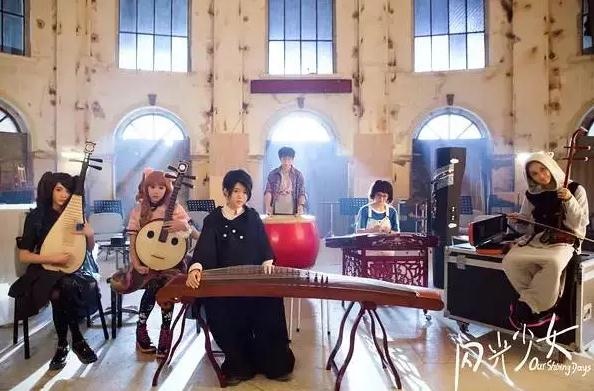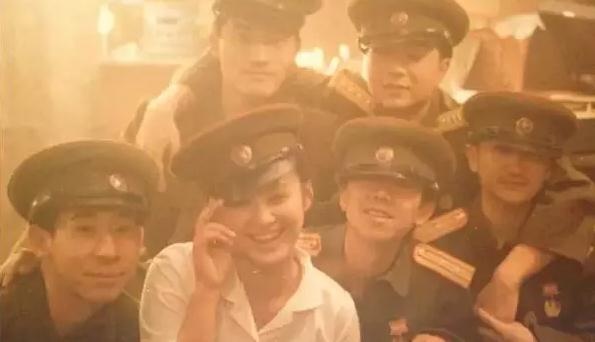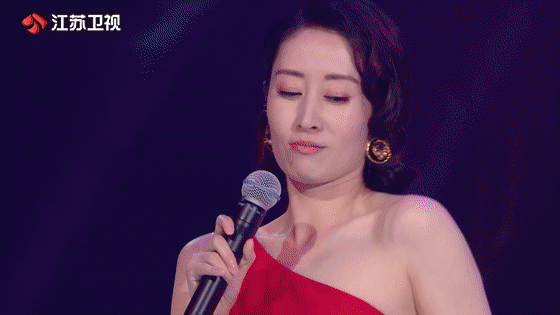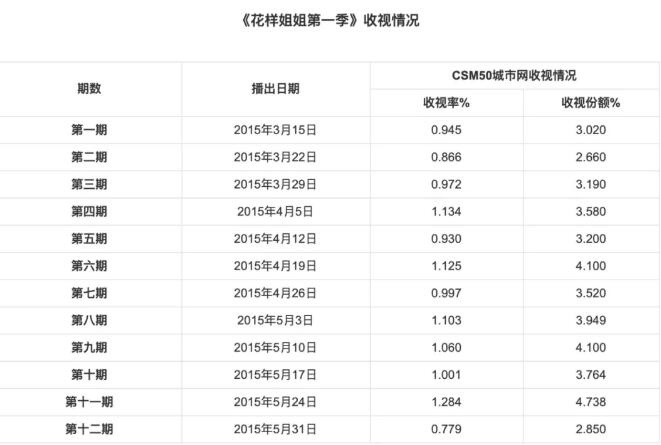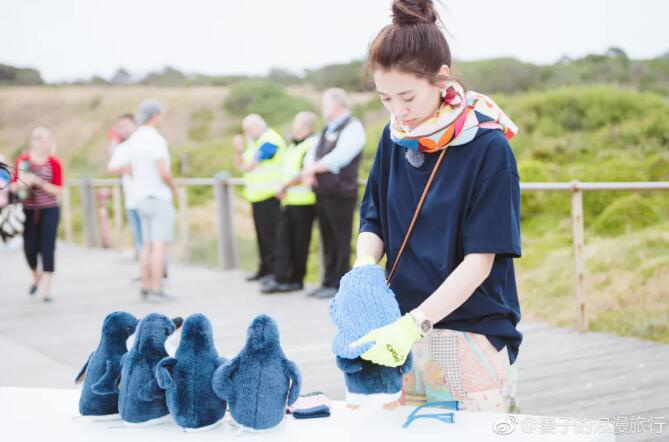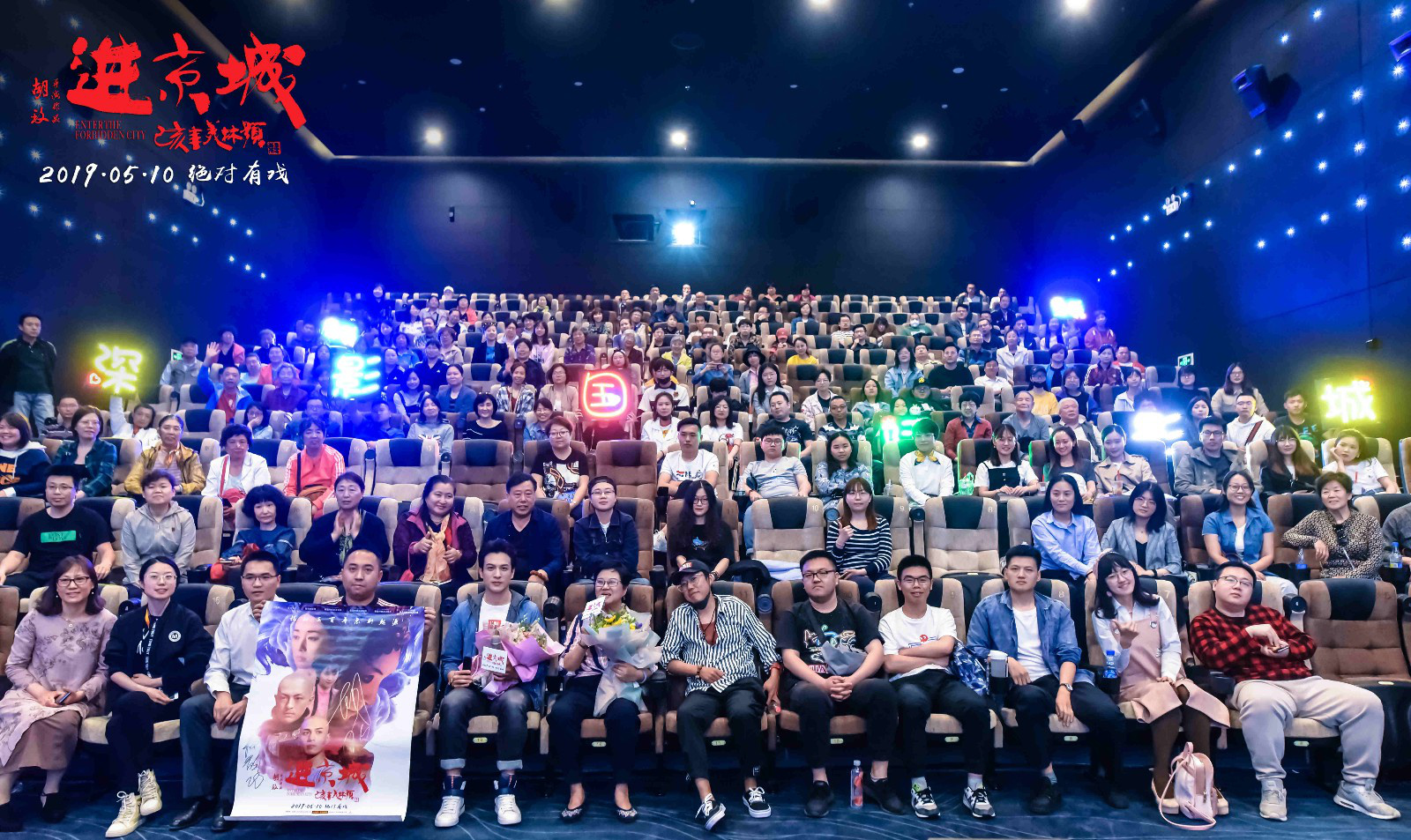education
Ordinary institutions of higher learning Refers to the full-time universities, independent colleges, junior colleges, higher vocational schools and other institutions that are approved to be held according to the setting standards and examination and approval procedures stipulated by the state, recruit high school graduates as the main training objects, and implement higher education.
Universities and independent colleges mainly carry out education at or above the undergraduate level, colleges and vocational schools carry out education at the junior college level, and other institutions are institutions that undertake the tasks of the national general enrollment plan. Including branches of ordinary colleges and universities and approved ordinary colleges and universities.
Independent college Refers to the secondary colleges at the undergraduate level organized by ordinary undergraduate colleges according to the new mechanism and model. The secondary colleges, "branch schools" or other similar secondary institutions established by some ordinary undergraduate colleges according to the public mechanism and mode do not belong to this category.
adult higher colleges Refers to the national unified entrance examination for adult higher education, which is approved by the national setting standards and examination and approval procedures.,Schools that recruit people who have graduated from high school or equivalent education as the main training object and implement higher education by correspondence, part-time and full-time education. Including staff colleges and universities, farmers colleges and universities, management cadre colleges, education colleges, independent correspondence colleges, radio and television universities, and other institutions. Other institutions are institutions that undertake the tasks of the national adult enrollment plan without counting schools.
Other private institutions of higher education Refers to the units that have been approved by the education administrative departments of provinces, autonomous regions and municipalities directly under the Central Government and issued school licenses, and do not have the qualification to issue diplomas from ordinary colleges and universities.
Secondary vocational education After adjustment, secondary vocational schools refer to all kinds of school types that implement secondary vocational education, such as ordinary secondary specialized schools (secondary technical schools, secondary normal schools), adult secondary specialized schools, vocational high schools and other institutions, and are adjusted into unified school types through merger, co-construction, joint operation and transfer.
Other institutions Refers to the educational institutions undertaking secondary vocational education without counting schools (including closed schools and secondary vocational education institutions attached to institutions of higher learning).
Vocational junior high school Refers to a teaching institution approved by the education administrative department at or above the county level to recruit primary school graduates to implement junior secondary vocational and technical education.
primary education Refers to the teaching institutions approved by the education administrative departments at or above the county level to recruit school-age children to implement primary education.
approved school Refers to a teaching institution jointly organized by the education department and the public security department to rescue middle school students who have minor violations of the law.
special needs education Refers to an independent teaching institution that recruits blind, deaf and mentally handicapped children and other children and adolescents with special needs for general or vocational primary and secondary education.
preschool education Including kindergartens and preschool classes. Pre-school class refers to an organizational form of organizing pre-school children to carry out one-year pre-school education in some areas where pre-school children cannot enter the park for three years. Preschool class is an important form of developing preschool education in rural areas, and it is also an auxiliary form for cities to make up for the shortage of kindergartens.
combined junior and senior high school Refers to the educational institutions jointly established by ordinary junior high schools and senior high schools.
On-the-job personnel pursue doctoral and master’s degrees. Refers to the students who are approved by the State Council Academic Degrees Committee and enrolled in the national entrance examination for doctoral and master’s degrees in order to improve the professional level of on-the-job personnel. The students trained only have degrees and no academic qualifications.
Self-taught students Refers to the students enrolled in full-time teaching remedial classes for students who take self-study exams in higher education.
Diploma examination students Refers to the full-time college students enrolled in other private higher education institutions to take the higher education diploma examination.
General preparatory students Refers to the preparatory enrollment plan issued with the approval of the Ministry of Education and the State Ethnic Affairs Commission, which recruits ethnic minorities, Hong Kong, Macao, overseas Chinese and Taiwanese students. After one year of cultural tutoring, those who pass are promoted to relevant majors in ordinary colleges and universities.
Further education and training Refers to all kinds of non-academic education in higher education schools (institutions).
Higher education qualification certificate training Refers to the non-academic education organized by various higher education institutions, which recruits management staff with high school graduation education, engaged in professional and technical work or strong professionalism, and obtains the professional knowledge level that meets the post requirements after passing the study and examination. The forms of certificate education include single-subject classes and professional certificate classes.
Higher education post certificate training Refers to the non-academic education and training activities organized by various higher education institutions to improve their work ability. All kinds of personnel who have received training pass the examination as required, and they will be issued with post qualification certificates and appointment letters. On-the-job training forms include qualification training and adaptability training.
Secondary education qualification certificate training Refers to all kinds of trained personnel who have passed the study and examination and obtained professional qualification certificates that meet the post requirements.
Secondary education post certificate training Refers to all kinds of trained personnel who have passed the study and examination, and issued post qualification certificates and post appointment letters.
Net enrollment rate of primary school-age children Refers to the proportion of school-age children who have entered primary school in the survey range to the total number of school-age children inside and outside the school (including mentally retarded children, excluding blind deaf-mute children).
Faculty (basic education) Refers to the fixed personnel (excluding temporary workers and teachers) who are prepared in schools and engaged in teaching, management and logistics support.
Teaching staff can be divided into teachers, administrators, teaching assistants and workers according to the nature of their work.
Faculty (higher and secondary vocational education) Refers to the number of teaching and administrative staff who work in schools (institutions) and are paid by schools (institutions), including ① those who are on the staff, that is, those whose personnel relations and files are in schools according to the original personnel management system; (2) Appointment personnel, that is, long-term and full-time staff recruited by universities (institutions) after the personnel system reform. The personnel relationship of the appointment personnel is in the school, but the files are not in the school.
The number of teaching and administrative staff includes the teaching and administrative staff of the headquarters, personnel of scientific research institutions, employees of school-run enterprises and personnel of other affiliated institutions.
full-time teacher Refers to a person who is qualified as a teacher and specializes in teaching.
National financial education funds Include education funds in that national budget, tax and fees levied by governments at all levels for education, school-run education fund by enterprises, and education funds from school-run industries, work-study programs and social services.
Education funds in financial budget Refers to the education funds arranged by the central and local governments at all levels or the competent department at a higher level during the year and planned to be allocated to schools and educational institutions at all levels sponsored by the education department and other departments, which are included in the national budget expenditure items, including education funds, scientific research funds, infrastructure funds and other funds.
culture
Cultural undertakings and cultural enterprise institutions Refers to the institutions and enterprises that specialize in culture and related work and have legal personality and independent accounting, as well as business professional cultural activity units that are independently accounted for and affiliated to institutions. Including: literary and artistic creation and performance, art performance venues, cultural relics and cultural protection, museums, libraries and archives, mass cultural activities, cultural and artistic brokerage and agency, other cultural and artistic industries, entertainment and cultural services, etc. Cultural and artistic education in the education industry; And other industries run by cultural institutions that do not belong to the above industries.
Non-cultural industrial institutions Refers to the institutions and enterprises that do not belong to the above "cultural institutions and cultural enterprises" and are directly under the competent cultural departments at all levels, as well as all kinds of non-cultural activities units run by various institutions and enterprises in the cultural sector.
Art performance group Refers to all kinds of professional art performance groups that are organized or managed by the cultural department and specialize in literature, art creation and performing arts, excluding half-work, half-agriculture and half-art troupes.
Art performance venues Refers to the management activities of places with auditorium, stage and lighting equipment, which are dedicated to the performance of literary and art groups. Including concert halls, opera houses, dance theaters, theatres, circuses and other places for cultural performances. Does not include cinemas, auditoriums, stadiums, art galleries and art galleries such as painting and sculpture.
Art colleges and universities Refers to the full-time, independent colleges and junior college art schools that are approved to be held according to the setting standards and examination and approval procedures stipulated by the state, incorporated into the national enrollment plan, passed the national unified enrollment examination, recruited high school graduates and those equivalent to high school education as the main training objects, and implemented higher education.
Secondary art school It refers to a full-time professional school that is approved by the Ministry of Culture or the people’s governments of provinces, autonomous regions and municipalities directly under the Central Government, incorporated into the national enrollment plan, organized entrance examinations according to state regulations, recruited primary or junior high school (or some senior high schools) graduates and those with equivalent academic qualifications, implemented secondary art education and trained secondary art talents.
Cultural cadre colleges Refers to colleges and universities where cultural cadres are trained and trained by leaders of cultural administrative departments at all levels.
Operating internet cultural unit Refers to the unit that issues the network culture business license by the cultural administrative department.
Radio and television
Total length of cable radio and television transmission trunk network It is used to transmit signals before or between various front ends and distribution points or optical nodes. Including: national trunk network, provincial trunk network, prefecture-level trunk network, county-level trunk network and leased trunk network.
Number of cable radio and television users Refers to the number of users who watch TV programs through radio and television cable transmission network, including the number of cable TV users who receive analog signals and digital signals.
Number of analog TV users Refers to the number of users who watch analog signal TV programs through radio and television cable transmission network.
Number of digital TV users Refers to the number of users who watch digital signal TV programs through radio and television cable transmission network.
Number of paid digital TV users Refers to the number of cable TV users who watch digital TV programs through radio and television cable transmission network and pay the viewing fee.
Number of public broadcasting programs Refers to the number of radio programs approved by the State Administration of Radio, Film and Television and run by radio and television broadcasters, which do not charge listeners for listening, and broadcast on a fixed frequency for the main purpose of providing public broadcasting services to the public, and have a complete set of self-run program schedules. This refers to the number of programs broadcast to the public for free, not only to public channels.
Time for broadcasting purchase and exchange programs throughout the year. Refers to the annual broadcast time of radio and television broadcasters through purchase, exchange and other transactions, including imported programs, which belongs to public broadcast time.
Microwave station The total number of starting stations, opening stations, relay stations and terminal stations of microwave lines.
Length of digital microwave transmission trunk line Refers to the length of microwave trunk line capable of transmitting digital signals.
Long-term employee Refers to employees whose employment period is more than one year (including one year).
Carry-over self-raised infrastructure Refers to the use of non-financial funds for infrastructure funds.
sports
Sports full-time coach Refers to coaches who specialize in sports training.
letterman Refers to the personnel who have been approved by the labor and personnel departments at all levels to join the team and specialize in sports training, including athletes in training and trial training.
First-line athletes Refers to the national team, national training team, Chinese youth team and outstanding sports teams in various provinces, municipalities and autonomous regions.
Second-line athletes Refers to sports classes in sports schools. Third-line athletes: refers to all kinds of amateur sports schools for children.
health
health institution Refers to the units that have obtained the Practice License of Medical Institutions from the administrative department of health, or obtained the registration certificate of legal entity from the administrative departments of civil affairs, industry and commerce, and establishment management, and provided medical care, disease control, health supervision services or engaged in medical research and education for the society. Health institutions include hospitals, sanatoriums and community health service centers.(stand), hospitals, clinics, clinics(Health clinic, infirmary), emergency center(stand), blood collection and supply institutions, maternal and child health centers(Station, station)Specialized disease prevention and treatment center(Station, station)Center for Disease Control and Prevention(epidemic station), health supervision, health supervision and inspection(Monitoring and testing)Institutions, medical research institutions, medical on-the-job training institutions, health education institutes(stand)Other health institutions. This data does not include village clinics (separate statistics).
medical institution Refers to the institutions that have obtained the Practice License of Medical Institutions from the administrative department of health, including hospitals, sanatoriums and community health service centers.(stand), hospitals, clinics, clinics(Health clinic, infirmary), Maternal and Child Health Hospital(Station, station)Specialized disease prevention and treatment center(Station, station) , emergency center(stand)And clinical laboratory center. This information does not include village clinics.(Separate statistics).
Nonprofit medical institutions Refers to the medical institutions established and operated for the public interest, not for profit, and their income is used to make up for the cost of medical services.
For-profit medical institutions Refers to medical institutions whose income from medical services can be used to make up for investors’ economic returns. The government does not run for-profit medical institutions.
hospital Including general hospitals, traditional Chinese medicine hospitals, integrated traditional Chinese and western medicine hospitals, ethnic hospitals, various specialized hospitals and nursing homes, excluding specialized disease prevention hospitals, maternal and child health hospitals and nursing homes.
hospital of traditional Chinese medicine Refers to traditional Chinese medicine(comprehensive)Hospitals and specialized hospitals of traditional Chinese medicine, excluding hospitals of integrated traditional Chinese and western medicine and ethnic hospitals.
special hospital Including stomatological hospitals, ophthalmology hospitals, otolaryngology hospitals, tumor hospitals, cardiovascular hospitals, chest hospitals, hematological hospitals, and maternity hospitals.(branch of academic or vocational study)Hospitals, children’s hospitals, psychiatric hospitals, infectious diseases hospitals, dermatology hospitals, tuberculosis hospitals, leprosy hospitals, occupational diseases hospitals, orthopedic hospitals, rehabilitation hospitals, plastic surgery hospitals, beauty hospitals and other specialized hospitals, excluding traditional Chinese medicine hospitals, various specialized disease prevention hospitals and maternal and child health care hospitals.
community health service centers(stand) Refers to the grass-roots health institutions that provide prevention, medical treatment, health care, rehabilitation, health education and family planning technical services for residents in this community.
Union ban village clinic Refers to the village clinic by two or more rural doctors jointly run, rural doctors and health workers jointly run and practice.(assistant)Doctors and rural doctors or health workers jointly run.
Health personnel Refers to the workers working in health institutions such as medical treatment, preventive health care, medical scientific research and on-the-job education, including health technicians, other technicians, managers and workers. All statistics are based on the on-the-job employees who pay the wages at the end of the year, including recruiters, excluding temporary workers, retirees, those who leave the unit and still retain labor relations and those who are re-employed.
health workers Including practicing.(assistant)Doctors, registered nurses, pharmacy personnel, inspection and imaging personnel and other health professionals. Does not include health technical personnel engaged in management work.(Will be included in the management personnel.).
doctor Including chief physician, deputy chief physician, attending physician, resident physician and healer.
certified doctor Including chief physician, deputy chief physician, attending physician and resident physician.
Practitioner (assistant) physician Refers to the personnel who have the Medical Practitioner’s License and their "level" as "practicing (assistant) doctors" and are actually engaged in medical treatment, prevention and health care, excluding the practicing (assistant) doctors who are actually engaged in management. The categories of practicing (assistant) doctors are divided into four categories: clinical, traditional Chinese medicine, oral and public health.
registered nurse Refers to the personnel who have registered nurse certificate and are actually engaged in nursing work, excluding nurses engaged in management work.
Pharmacy personnel Including chief pharmacists, deputy chief pharmacists, competent pharmacists, pharmacists, pharmacists and pharmacists.
Inspector Including chief inspection technician, deputy chief inspection technician, chief inspection technician, inspection technician, inspection technician and inspector.
Other technicians Refers to those who graduated from high schools and other non-health majors such as chemistry and mathematics, and are now engaged in technical work such as health promotion, scientific research and teaching.
administrative staff Including the person in charge of the unit, mainly engaged in medical care, disease control, health supervision, medical research and teaching and other business management personnel, mainly engaged in party and government, personnel, finance, information, security and other administrative management personnel.
Health technical personnel per thousand population That is, the number of health technicians/PopulationX1000. Population is the registered population of the Ministry of Public Security.
country doctor Refers to the personnel who have obtained the certificate of "village doctor" from the local health administrative department in the village clinic.
health worker Refers to the personnel who have not obtained the certificate of "village doctor" in the village clinic.
Bed number Refers to the fixed bed at the end of the year.(Non-compiled bed), including regular beds, simple beds, monitoring beds, beds being disinfected and repaired, beds stopped due to expansion or overhaul, excluding obstetric newborn beds, delivery rooms, waiting beds, observation beds, temporary extra beds and accompanying beds for patients’ families.
Number of beds in hospitals and health centers per thousand population namely(Hospital bed+Hospital bed)/PopulationX1000. Population is the registered population of the Ministry of Public Security.
total expenditure on health Reflect the total amount of funds spent on medical and health care services in the whole country in that year, and calculate it by financing source method. It is divided into three parts: government budget health expenditure, social health expenditure and personal cash health expenditure.
Government budget health expenditure Refers to the financial budget allocated by governments at all levels for health care. Including: ① public health service funds(Including health service fees, Chinese medicine service fees, drug supervision and management fees, family planning service fees, budgetary capital construction funds, medical research funds, health administration fees, basic medical insurance subsidies and rural cooperative medical care government subsidies.); ② Medical expenses of administrative institutions.
Social health expenditure Refers to the government’s extra-budgetary investment in health care from all walks of life. Including social basic medical insurance premiums, other social insurance medical and health expenses, commercial health insurance premiums, non-health department administrative institutions office expenses, enterprise staff medical and health expenses, agriculturalVillage collective economic health expenditure, health extra-budgetary capital construction funds, initial investment of private medical treatment, extra-budgetary capital investment of public health institutions, etc.
Personal cash health expenditure Refers to urban and rural residents using their disposable economic income.,Cash when receiving various medical and health services,Including personal cash health expenditure of urban residents and personal cash health expenditure of rural residents.
Per capita medical expenses of outpatients Also known as medical expenses per visit. namely(Medical outpatient income+Drug outpatient income)/Total number of visits.
Per capita medical expenses of inpatients Also known as the per capita medical expenses of discharged patients. namely(Medical hospitalization income+Drug hospitalization income)/Number of discharged patients.
The average daily hospitalization medical expenses of discharged patients namely(Medical hospitalization income+Drug hospitalization income)/Number of days of total bed occupied by discharged patients.
Total number of visits Refers to the total number of people in all diagnosis and treatment work. Including outpatient and emergency visits of patients, visits, visits to family sickbeds, visits to hospitals, visits to staff in our hospital, individual health check-ups and health consultation and guidance, and individual health check-ups in some areas.
Number of hospital admissions per 100 emergency departments. That is, admission number/Outpatient and emergency visits x100.
Bed turnover times Refers to the ratio of "number of discharged patients" to "average number of open beds".
Average length of stay of discharged patients It refers to the ratio of "the number of days occupied by discharged patients" to "the number of discharged patients".
Doctors are responsible for the number of visits per day. That is, the number of patients/Average number of doctors/251.
The average physician is responsible for the hospital bed days every day. Refers to the actual occupation of total bed days./Average number of doctors/365.
Residents’ two-week attendance rate It refers to the ratio of the number of people who went to medical institutions for treatment due to illness or physical discomfort in the two weeks before the survey to the number of people surveyed.
Residents’ two-week absence rate It refers to the ratio of the number of people who were ill but didn’t see a doctor in the two weeks before the survey to the number of people who were sick in the two weeks.
Hospitalization rate of residents Refers to the ratio of the number of hospitalized residents due to illness to the number of people surveyed in the year before the survey.
Live birth number Refers to the number of live births during the year. Live birth refers to the pregnancy product that is completely discharged or taken out from the mother regardless of the length of pregnancy. After it is separated from the mother, whether the umbilical cord is cut off or whether the placenta is attached, as long as the pregnancy product has one of the four life signs of breathing, heartbeat, umbilical cord pulsation or obvious voluntary muscle movement, it is considered as a live birth.
neonatal mortality (rate) Refers to the postpartum within the year.28The ratio of the number of newborns who died within days to the number of live births. Generally expressed in parts per thousand.
fiveUnder-five mortality rate Refers to the year is not full.fiveRatio of deaths to live births of children aged. Generally expressed in ‰.
Maternal mortality rate Refers to every year10The death toll of 10,000 pregnant women. Maternal death refers to the period from the beginning of pregnancy to postpartum.forty-twoDeath within days, regardless of the time and place of pregnancy, includes death due to internal and surgical reasons, family planning operation, ectopic pregnancy and hydatidiform mole, but does not include death due to accidental reasons. According to the international general calculation method, the "total number of pregnant and lying-in women" is calculated by "number of live births".
High-risk maternal ratio Refers to the ratio of high-risk number to live births caused by various pathological factors and acute and chronic risk factors. General use%Express.
Maternal card establishment rate Refers to the health care card established by health care personnel during the year.(volume)Ratio of number of people to number of live births. General use%Express.
Systematic management rate of pregnant women Refers to pregnancy during the year to postpartum.28Received early pregnancy examination and prenatal examination within days ≥fiveSecond, the ratio of the number of parturients who received disinfection delivery and postpartum visit to the whole health care service to the number of local live births. General use%Express.
Prenatal check-up rate Refers to the ratio of the number of pregnant women who have received one or more prenatal examinations during the year to the number of live births. General use%Express.
Postpartum visit rate Refers to the ratio of the number of parturients who have received one or more postpartum visits during the year to the number of live births. General use%Express.
Hospital delivery rate Refers to the ratio of the number of births to the number of live births in township hospitals and medical and health institutions above the township level during the year. General use%Express.
New delivery rate Refers to the ratio of the sum of the number of births delivered by the new method of hospital delivery and non-hospital delivery to the number of live births during the year. General use%Express. The new method of delivery means that the delivery package, the hands of the midwife, the vulva of the parturient and the umbilical cord are disinfected and delivered by doctors, midwives and trained primary health personnel and midwives who have obtained the certificate of "family midwife".
the two week prevalence rate That is, the number of patients in the two weeks before the investigation.(Or number of cases)/number of people surveyedX1000.
Prevalence of chronic diseases There are two definitions: the prevalence rate of chronic diseases calculated by the number of people refers to the ratio of the number of patients with chronic diseases to the number of people surveyed in the first half of the survey; The prevalence rate of chronic diseases calculated by the number of cases refers to the number of cases of chronic diseases in the first half of the investigation.(Including one person who has been sick many times.)Compared with the number of people surveyed. "Chronic disease" refers to: ① chronic diseases (including chronic infectious diseases such as tuberculosis and chronic non-infectious diseases such as coronary heart disease and hypertension) confirmed by doctors within the first half of the investigation; ② He was diagnosed with a chronic disease by a doctor six months ago, and he had an attack during the first half of the investigation, and took treatment measures such as taking medicine and physical therapy. One of them is that they are suffering from "chronic diseases".
Statutory reporting incidence of infectious diseases Refers to every year in a certain area.10Number of legally reported infectious diseases of Class A and B in the population of 10,000. That is, the incidence of infectious diseases is legally reported=Number of legally reported infectious diseases of Class A and B/PopulationX100000.
Statutory reporting of infectious disease mortality Refers to every year in a certain area.10Number of legally reported infectious disease deaths of Class A and Class B in the population of 10,000. That is, legally reported infectious disease mortality.=Number of legally reported infectious disease deaths in Class A and Class B/PopulationX100000.
Mortality rate of legally reported infectious diseases Refers to the ratio between the number of deaths and the number of cases of legally reported infectious diseases in a certain area in a certain year. That is, legally reported mortality of infectious diseases.=Number of legally reported infectious disease deaths in Class A and Class B/Incidence numberX100%.
Standardized mortality rate That is, the age-standardized mortality rate refers to the mortality rate calculated according to the age structure of a standard population.
Qualified rate of food hygiene Refers to the qualified rate of food hygiene sampling inspection.,That is, the number of qualified food hygiene sampling monitoring pieces./Number of monitoring piecesX100%.
social work
Private non-enterprise Refers to enterprises, institutions, social organizations, other social forces and individual citizens who use non-state-owned assets to organize non-profit social service activities.
Number of regular pensions Refers to the number of families of revolutionary martyrs, families of soldiers who died in the line of duty or died at the end of the reporting period who met the pension conditions and were given regular pensions by the state.
Number of regular subsidies Refers to the sum of the demobilized soldiers who can’t participate in productive labor and have a particularly difficult life, the demobilized soldiers who have completely lost their ability to work and have a difficult life, the lost Red Army personnel, and other people who enjoy regular payment with pension expenses at the end of the reporting period.
Veterans of the Red Army in the countryside (separated Red Army personnel, marked army), etc. point to1937yearsevenmoonsixsunFormerly enlisted in the Chinese Red Army of Workers and Peasants (including the marked army, the anti-Japanese Coalition forces and the full-time guerrillas led by the Communist Party of China (CPC)); There are discharge procedures or exact certificates; Those who have not defected to the enemy, and who have continued to maintain the revolutionary tradition after returning to the local area, and those who have been separated from the Red Army due to injury, illness, defeat in battle or organized mobilization, and have performed well after leaving the team, and have been recognized by the local people, reviewed by the township people’s government, and approved by the county and municipal people’s governments.
Demobilized soldiers in rural areas Refers to1954year11moononesunNon-commissioned officers and soldiers who volunteered to join the army before and were demobilized, or those who were conscripts but later changed to volunteers or cadres were treated as demobilized.
Number of scattered martyrs memorial buildings Refers to the total number of martyrs memorial buildings without martyrs memorial building management unit at the end of the reporting period. Including the number of monuments, towers, pavilions, shrines and martyrs’ cemeteries that praise revolutionary martyrs.
Adoption unit (social welfare unit providing accommodation) Refers to the general name of social welfare institutions that provide accommodation, rest homes for disabled revolutionary soldiers, sanatoriums for retired soldiers with chronic diseases, mental hospitals for retired soldiers, glorious hospitals, social welfare homes, children’s welfare homes, mental patients’ welfare homes, elderly adoption institutions (nursing homes, nursing homes, elderly apartments) and so on.
Social welfare enterprise Refers to the centralized placement of disabled people with certain working ability for the purpose of employment (disabled workers account for production personnel)10%Above), a general term for enterprises with social welfare nature. Social welfare enterprises are classified as: social welfare factories, artificial limb factories and other welfare enterprises.
Regular quantitative relief funds in cities and towns According to the regulations, the civil affairs department shall issue regular quantitative relief funds to the orphans, the old, the disabled, the young and the residents who have no fixed occupation, fixed income and living difficulties in cities and towns that have not yet implemented the minimum living security system.
Regular quantitative relief in rural areas By the civil affairs department to the rural income level is very low, life is really difficult, poor households living relief.
Streamline retired old workers point to1957Work before the end of the year, at1961Year’s arrival1965yearsixmoonninesunOld employees who were downsized during the period.
40%relieve Refers to the original standard salary given by the civil affairs department to the old, weak, sick and disabled among the streamlined retired old workers.40%Relief.
Streamline the assistance for retired workers Refers to the right or wrong40%The civil affairs department shall give relief to the streamlined retired workers who have difficulties in life for more than half a year.
Temporary relief in rural areas Refers to the life relief given by the state or the collective to those who have temporary difficulties in life for less than half a year during the reporting period.
Welfare lottery chest Refers to the extra-budgetary funds earmarked for the development of social welfare undertakings raised by issuing China welfare lottery tickets according to relevant state regulations. The income of social welfare fund includes: the net income after deducting the redemption and management fees from the total amount of welfare lottery tickets sold in China; Abandoned prize income without prize pool in lottery sales; Interest on bank deposits of social welfare funds.
household enjoying the five guarantees Refers to the person who cannot be legally obligated to support, or the person who is legally obligated to support, but the person who supports him is incapable of supporting; Incapable of working; The elderly, the disabled and the minors who have no source of livelihood.
“Sanwu"target Refers to the residents who can’t support (support, support) obligors, have no ability to work and have no source of income.
Number of charity supermarkets Refers to the number of social donation institutions that rely on regular social donation stations (points) to solve the living difficulties of urban poor residents, take targeted collection and distribution as the main form, learn from the management model of commercial supermarkets, and receive donated materials on demand for relief objects.
Urban elderly adoption welfare institutions Refers to the general name of social welfare institutions that provide accommodation, are not for profit, and mainly adopt the social "three noes" and the elderly whose families are unable to take care of them.
Rural elderly adoption welfare institutions (rural five-guarantee welfare institutions) Refers to the social welfare units that provide accommodation, are not for profit, and mainly adopt "five guarantees" and elderly people whose families are unable to take care of them in rural areas (townships and towns).
Community Service Center Refers to welfare institutions that do not provide multi-functional comprehensive services (more than two services) for the elderly, disabled people, families of martyrs and other community residents for profit. Basic conditions for being called a community service center: (oneThere is a certain place (the construction area is in100square meterAbove); (2) there are fixed management personnel; (three) The social welfare services provided must be more than two; (four) is an independent accounting unit.
Social welfare hospital Refers to the social welfare hospitals (including psychiatric welfare hospitals) that provide accommodation, are not for profit, and mainly treat the homeless, helpless, and have no source of income, as well as the civil objects such as subsistence allowances and special care recipients.
Other payments Expenditure for civil affairs refers to the expenditure for civil affairs arranged by the finance from the budget. Such as military supply station funds, medical assistance, and secondary specialized schools organized by civil affairs departments.
Disabled cause
Cataract surgery Refers to the number of cases of cataract surgery.
Intraocular lens implantation Refers to the number of cases of intraocular lens implantation in cataract surgery.
become literate Refers to the number of cases of blindness after cataract surgery.
Equipped with visual AIDS Refers to the number of tasks completed with visual AIDS for low vision in this year.
Hospital ophthalmology Refers to the number of newly opened low-vision clinics in hospitals at the municipal level (including county-level cities) this year.
Total number of newly recruited deaf children Refers to the sum of the number of deaf children newly trained in rehabilitation institutions and families this year.
Training parents of deaf children Refers to the number of parents of deaf children who held parent training classes this year (excluding parents of deaf children who are being trained by provincial centers and language training departments).
In-service teacher Refers to teachers who are directly engaged in rehabilitation training in rehabilitation institutions at all levels.
In-service medical skills Refers to the professional and technical personnel engaged in deafness diagnosis, hearing test, hearing aid selection, ear mold making, rehabilitation evaluation, psychological test and so on in rehabilitation institutions at all levels.
Rehabilitation and correction of leprosy deformity Refers to the number of cases in which leprosy patients received leprosy deformity correction surgery this year.
Set up a medical team Refers to the number of batches of provincial and municipal leprosy rehabilitation medical teams in this year.
Distribution of assistive devices (excluding artificial limbs) for leprosy disabled persons Refers to the total number of assistive devices distributed to leprosy disabled people in this year. Auxiliary appliances include protective shoes, insoles, goggles, crutches, wheelchairs, self-help appliances, orthoses, etc.
Rehabilitation training of leprosy deformity Refers to the number of leprosy disabled rehabilitation training tasks completed this year. Rehabilitation training includes self-care training and functional exercise.
Total cases of popular leg prosthesis assembly Refers to the number of popular leg prostheses assembled by the Disabled Persons’ Federation system this year.
Total cases of universal thigh prosthesis assembly Refers to the number of popular thigh prostheses assembled by the Disabled Persons’ Federation system this year.
Covering the total population Refers to the sum of the population covered by cities and counties that carry out intensive prevention and rehabilitation work. The population of prefecture-level cities refers to the population of the city, excluding the population of cities and counties under their jurisdiction; The population of county-level cities and counties refers to the population under the jurisdiction of the cities and counties.
Number of mental patients Refers to the total number of registered mental patients after a thorough investigation, rather than the figures calculated or estimated according to the incidence rate.
Number of patients under guardianship Refers to the total number of mental patients who receive socialized, open and comprehensive treatment and rehabilitation through monitoring groups, family sickbeds, industrial treatment stations, social employment and mental health institutions.
Number of significantly improved patients Refers to the number of mental patients whose condition is stable and their symptoms are relieved after taking effective treatment and rehabilitation measures.
Total number of people participating in society Refers to the number of mental patients who can take care of themselves and participate in housework, social production and social activities.
Accident rate Refers to the percentage of the number of people who violate the regulations on public security management and the total number of registered mental patients in the year.
Number of rehabilitation training for children with physical disabilities and cerebral palsy It refers to the number of tasks completed in rehabilitation training for physically disabled and cerebral palsy children in this year.
Effective number of rehabilitation for children with physical disabilities and cerebral palsy After systematic rehabilitation training, the training effect is the sum of significant effect and effective number.
Number of rehabilitation training for children with intellectual disabilities Refers to the sum of the tasks completed by mentally disabled children in institutions and families during this year.
Effective number of institutional and family rehabilitation for children with intellectual disabilities Respectively, after rehabilitation training in institutions and families, the training effect is the sum of great progress and the number of progress.
Number of municipal districts and counties (cities) carrying out rehabilitation services this year It refers to the number of tasks of municipal districts and counties (cities) that have carried out rehabilitation services for the disabled in this year to meet the requirements of the implementation measures of the Tenth Five-Year Plan for Rehabilitation Training and Services.
Cumulative number of municipal districts and counties (cities) carrying out rehabilitation services Respectively refer to2001Since, the sum of the number of tasks of municipal districts and counties (cities) that have carried out rehabilitation services for the disabled to meet the implementation requirements of the Tenth Five-Year Plan for Rehabilitation Training and Services.
Total rehabilitation training service institutions Refers to the current year.twelvemoon31On, the sum of the number of rehabilitation training service institutions for children with physical disabilities (including children with cerebral palsy) and intellectual disabilities at the provincial, city (prefecture), county (city, district) and county (city, district) levels.
Provincial, prefectural (city) and county (city, district) level disabled persons’ Federation system rehabilitation training service institutions. Refers to the end of this year.twelvemoon31Number of rehabilitation training service institutions for physically disabled (including children with cerebral palsy) and intellectually disabled children established by the Disabled Persons’ Federation system at the provincial, city (prefecture) and county (city, district) levels.
Rehabilitation training service institutions established outside the Disabled Persons’ Federation system at the provincial, prefecture (city) and county (city, district) levels. Refers to the end of this year.twelvemoon31Number of rehabilitation training service institutions for physically disabled (including children with cerebral palsy) and mentally disabled children established by departments and social forces outside the Disabled Persons’ Federation system at the provincial, city (prefecture) and county (city, district) levels.
Total training this year Refers to the sum of the training times of managers and technicians carried out by provinces, cities and districts (counties) according to the Tenth Five-Year Plan for Rehabilitation Training and Services this year.
Distribute iodine supplement publicity materials Refers to the sum of promotional materials (posters, brochures, popular science books, etc.) issued by the China Disabled Persons’ Federation and the disabled persons’ federations of all provinces, autonomous regions, municipalities directly under the Central Government and counties in this year.
Organize iodine supplementation publicity activities. Refers to all kinds of publicity activities, such as IDD prevention day, exhibition, consultation and knowledge lecture, jointly organized by the Disabled Persons’ Federation at all levels and the Disabled Persons’ Federation with health, civil affairs, family planning commission, salt industry, publicity and other relevant departments this year to eliminate IDD and prevent intellectual disability caused by iodine deficiency.
Number of people with special needs receiving publicity and education on iodine supplementation Refers to the number of people with special needs (newly married women of childbearing age and pregnant women) in a region who have received publicity and education on iodine supplementation. The total number of people with special needs for publicity and education can be1996Based on the estimated number of iodine supplements for people with special needs in.
Ordinary high schools for the blind and deaf It refers to the actual number of ordinary high schools for the blind and deaf respectively.
Number of people who have reached the admission scores of ordinary colleges and universities Refers to the actual number of disabled senior high school graduates who participated in this year’s college entrance examination and reached the admission score.
Reach the admission scores of ordinary colleges and universities. Refers to the actual number of disabled candidates who have not only reached the admission score of the college entrance examination but also been admitted by ordinary colleges and universities (excluding the number of students admitted to higher special education institutions).
Number of students enrolled in higher special education institutions Refers to the number of blind and deaf students admitted to higher special education colleges (schools) and majors (classes) this year.
Total educational and training institutions Refers to the number of academic education and non-academic training institutions specially organized by the society and the Disabled Persons’ Federation system for the disabled.
Total vocational training Refers to the vocational training of the society and the Disabled Persons’ Federation system except academic education, and the actual number of trainees in this year (including the number of trainees).
Total secondary vocational education institutions for the disabled Refers to the current year.twelvemoon31Day, including the actual number of secondary vocational education institutions with academic qualifications for the disabled in special education schools, society and disabled persons’ federations.
School-age disabled children and adolescents with vision, hearing, intelligence, physical and mental disabilities who are not enrolled in school. Refers to a person who suffers from only one type of disability. Use of criteria for defining disability categories1987yearfourThe disability category standard of the national sample survey of disabled people in June.
Multiple disabilities Refers to a person suffering from two or more categories of disabled people. Use of criteria for defining disability categories1987yearfourThe disability category standard of the national sample survey of disabled people in June.
We should help poor disabled children and adolescents who are not enrolled in school. Refers to disabled children and adolescents who live below the local poverty line and are not enrolled in school.
Cumulative employment situation of urban disabled people Refers to urban (non-agricultural registered permanent residence) centralized employment of disabled people, decentralized proportional employment (including disabled people who have been employed in various social units before the implementation of proportional employment) and individual employment, as of this year.twelvemoon31The cumulative number of people who have been placed in employment on a daily basis.
This year’s vocational skills training for disabled people Refers to the number of persons with disabilities who are employable but not employed, need to change their occupations and have been employed and need to improve their technical level. (including pre-employment training, pre-job training, job transfer training and on-the-job training, etc.)
Accumulated unemployment of urban disabled persons Refers to the current year.twelvemoon31The actual cumulative number of people with disabilities in cities and towns who have employment requirements and employment ability but have not arranged employment (men of employment age)16-forty-nineYears old; woman16-forty-fourYears old)
Cumulative employment in rural areas Refers to the current year.twelvemoon31Disabled people in rural areas (agricultural registered permanent residence) are engaged in all kinds of productive labor, including planting, aquaculture, cottage industry and the total number of disabled people in various types of enterprises, services, businesses and individual businesses.
Accumulated stable employment in rural areas Refers to the cumulative number of disabled people with a relatively fixed income and a relatively stable life in the "cumulative employment in rural areas".
Practical technical training this year Refers to the number of disabled employment service agencies, organizations and schools with the help of social forces in this year, and various agricultural technical trainings for rural disabled people such as "planting, raising and adding".
Cumulative unemployment of disabled people in rural areas Refers to the current year.twelvemoon31The cumulative number of disabled people in rural areas who hold the local official agricultural registered permanent residence and have participated in the labor demand but have not engaged in the occupation described in the "Cumulative Employment in Rural Areas" (the employment age is16Age and16Years old or older. It does not include disabled people who cannot support productive labor due to lack of working conditions and can only solve food and clothing through social relief).
Poor disabled people Refers to the current year.twelvemoon31Number of rural poor disabled people living below the local poverty line.
Can support poor disabled people Refers to the number of poor disabled people who are suitable to participate in productive labor.
Cities and towns have been included in the minimum living guarantee. Refers to the disabled with urban hukou, and the per capita income of family members is lower than the local minimum living standard for urban residents, which has been included in the minimum living guarantee.
Centralized support Refers to the number of disabled people in cities and towns who meet the conditions of five guarantees and are supported by social welfare institutions such as social welfare homes.
Temporary relief Refers to the number of disabled people who have urban hukou, have temporary difficulties due to unexpected accidents, affect their basic life, and enjoy funds and in-kind assistance donated by the government or society from time to time.
Rural areas have been included in the minimum living security. Refers to the number of persons with disabilities in agricultural registered permanent residence, whose per capita income of family members is lower than the local minimum living standard in rural areas and has been included in the minimum living guarantee.
Five guarantees Refers to the number of disabled people who are unable to legally support their obligations in rural areas, or who have legal support obligations but have no ability to support, have no ability to work and have no source of income, and receive life care and material help in food, clothing, housing, medical care and burial.
Temporary relief Refers to the number of disabled people who have agricultural registered permanent residence, have temporary difficulties due to unexpected accidents, affect their basic life, and enjoy funds and in-kind assistance donated by the government or society irregularly.
Regular subsidy Finger continuitysixNumber of persons with disabilities who enjoy temporary relief for more than one month and are given regular and quantitative financial subsidies by the government.
specific grant Refers to the number of disabled persons who have been subsidized by the Disabled Persons’ Federation by setting up special subsidies and other measures in addition to implementing various safeguard measures.
Provincial, city (prefecture) level audio books library (room) It refers to the actual number of audio-visual books libraries and rooms for the blind that have been opened or opened in introspection, city (prefecture) level public libraries (rooms) and disabled people’s activity facilities this year.
Provincial, city (prefecture) level sports venues It refers to the number of sports venues for the disabled determined by signing agreements or listing in public stadiums at the introspection and city (prefecture) levels this year.
Develop rehabilitation and fitness programs for the disabled. Refers to the number of rehabilitation and fitness programs suitable for disabled people developed by provincial disabled persons’ federations this year.
Provincial and municipal sports competitions for the disabled. Refers to the provincial (including cities specifically designated in the state plan) and city (prefecture) level sports commission, the Disabled Persons’ Federation and the Sports Association’s provincial and city (prefecture) level disabled games (tryouts) in this year.
NPC law enforcement inspection Refers to the number of times that people’s congresses at the provincial (autonomous regions and municipalities directly under the Central Government), prefecture (city) and county (city, district) levels inspected the implementation of the law on the protection of the disabled and its implementation methods and provisions on helping the disabled this year.
CPPCC inspection or special investigation Refers to the number of inspections or special investigations on the implementation of the law on the protection of the disabled and its implementation methods and the provisions on helping the disabled by the CPPCC at the provincial (autonomous region, municipality directly under the Central Government), prefecture (city) and county (city, district) levels this year.
Special inspection by the government and relevant administrative functional units Refers to the number of times that the provincial (autonomous region or municipality directly under the Central Government), prefecture (city), county (city, district) governments and relevant administrative departments conducted special inspections on the implementation of the Law on the Protection of Disabled Persons and its implementation measures and provisions on assisting disabled persons this year.
Disabled legal aid (service) center Refers to the current year.twelvemoon31On, the cumulative number of legal aid centers for the disabled or branches (stations) of legal aid centers for the disabled, which are jointly organized by judicial administrative departments at the provincial (autonomous regions and municipalities directly under the Central Government), prefecture (city) and county (city, district) levels and disabled persons’ federations at the same level or run by disabled persons’ federations and approved by judicial administrative departments at the same level.
Persons with disabilities receive legal aid and services. It refers to the number of people who provide legal aid and services to the disabled in this year, such as law firms designated or entrusted by the provincial (autonomous regions and municipalities directly under the Central Government), city (prefecture) and county (city, district) level Disabled Persons’ Federation, legal aid (service) centers (sub-centers) for the disabled or the work department (station) of the legal aid center.
Investigate and deal with major cases that infringe on the legitimate rights and interests of the disabled. Refers to the cases concluded or handled within this year with one of the following conditions, which are directly involved (including cooperation with relevant departments) by the provincial and municipal disabled persons’ federations and disabled persons’ federations established or entrusted by them:
1. According to the local economic development level, the amount of the subject matter of the case is relatively large;
Two, the local major media reported the case;
Three, at or above the provincial level, the main leaders at or above the prefecture level have given instructions for handling;
4. The rights and interests of group disabled persons are infringed.
Provincial rights protection hotline Refers to the current year.twelvemoon31sun, the province (autonomous region, municipality directly under the central government) Disabled Persons’ Federation in the organ rights department (office), the petition department, the legal aid (service) center for the disabled set up the hotline (number).
Laws and regulations on the construction of barrier-free facilities and government orders Refers to the current year.twelvemoon31The local laws and regulations promulgated and implemented by the provincial (autonomous region, municipality directly under the Central Government), prefecture (city) level people’s congress or the government on June, aimed at promoting the construction and management of barrier-free facilities in this region.
Carry out the construction of barrier-free facilities in cities, counties and districts Refers to the current year.twelvemoon31On, the cumulative number of cities, counties and districts that have been jointly determined by provincial disabled persons’ federations and construction departments at the same level to carry out barrier-free facilities construction according to the outline of the tenth five-year plan and the eleventh five-year plan for the disabled in China and its supporting implementation plan.
Group visit of motor vehicles point tofiveVisits by groups of more than one person on motor vehicle transportation and motor vehicle operation.
Number of disabled persons’ federations to be built Subject to local administrative divisions.
Projects that have been put into use Refers to the comprehensive service facilities that have been completed and accepted and carried out for the disabled. Among them, "new projects put into use this year" refers to the projects in this year.onemoononeDay to this yeartwelvemoon31New facilities put into use between Japan and Japan.
Accumulated projects that have been put into use Refers to the current year.twelvemoon31All facilities that have been put into use.
Construction land area Refers to the total area of land occupied by the planned comprehensive service facilities.
scale of construction Refers to the construction area of the built comprehensive service facilities.
total investment For "projects that have been put into use", it refers to the actual amount of funds invested at the time of completion and settlement; For "projects under construction" and "projects under preparation", it refers to the total estimated amount for the construction of comprehensive service facilities for the disabled.
Public management and social organization
The people’s procuratorate directly files a case for investigation. Refers to the crime of corruption and bribery, the crime of dereliction of duty and infringement, the crime of infringing citizens’ personal rights and democratic rights committed by the staff of state organs by taking advantage of their functions and powers, and other major criminal cases committed by the staff of state organs by taking advantage of their functions and powers after the provincial people’s procuratorate decides to put on record for investigation.
Accept a case Refers to the newly accepted cases this year.
register It refers to the litigation activities in which the people’s procuratorate considers that there is a duty crime after a preliminary investigation of the accepted case, and should be investigated for criminal responsibility, and decides to investigate it as a criminal case, which is the beginning of investigating the crime. This indicator mainly reflects the litigation activities of the people’s procuratorate to investigate the clues of duty crimes as criminal cases according to law.
wind up/close/conclude a case Refers to the end of the investigation procedure.
Major case Refers to cases of corruption and bribery involving more than 50,000 yuan, misappropriation of public funds involving more than 100,000 yuan, and cases identified in accordance with the Standards of People’s Procuratorate for Directly Accepting Serious Cases of Dereliction of Duty and Infringement (Trial). This index mainly reflects the cases with great economic losses and serious social harm among the duty crime cases investigated by the people’s procuratorate.
key criminal case Refers to crimes committed by cadres at or above the county level. This indicator mainly reflects the situation that cadres at or above the county level are placed on file for investigation by the people’s procuratorate according to law in duty crime cases.
approve an arrest It means that the people’s procuratorate examines the criminal suspects arrested by the public security, state security organs and prison management organs, and makes a decision to arrest according to the facts. This indicator mainly reflects the situation that the people’s procuratorate makes a decision to approve the arrest according to law after examining the criminal suspect who has been arrested.
Decide to arrest Refers to the arrest decision made by the people’s procuratorate in accordance with the law when it deems it necessary to arrest the criminal suspect in a case directly put on file for investigation. This indicator mainly reflects the people’s procuratorate’s exercise of the right to decide on arrest in cases directly accepted.
to prosecute Refers to the people’s procuratorate to the public security, state security organs, prison management organs and procuratorial organs investigation department to review the case, according to the facts, make a public prosecution case. This indicator mainly reflects the situation that people’s procuratorates have prosecuted various criminal cases in people’s courts.
criminal case Refers to cases investigated by public security organs, state security organs and prison management organs in accordance with the provisions of jurisdiction.
Apply summary procedure Refers to the people’s court may be sentenced to fixed-term imprisonment of not more than three years, criminal detention, public surveillance, and a single fine. The facts are clear and the evidence is sufficient, and the people’s procuratorate suggests or agrees to apply summary procedures; Cases handled only after telling; A minor criminal case prosecuted by the victim with evidence.
first trial Refers to the first instance procedure of public prosecution cases.
review Refers to a case retried by the people’s court in accordance with the procedure of trial supervision.
Lodge a protest Refers to the litigation activities in which the people’s procuratorate considers that the judgment or ruling of the people’s court is really wrong and proposes to the people’s court to retry the case. Including protests in accordance with the procedure of second instance and protests in accordance with the procedure of trial supervision (retrial procedure).
Withdraw the protest Refers to the protest filed by the people’s procuratorate at a higher level against the people’s procuratorate at a lower level in accordance with the procedure of second instance. After examination, it is considered that the protest is inappropriate and the protest is withdrawn to the people’s court at the same level, and the people’s procuratorate at a lower level who lodged the protest is notified at the same time.
register Refers to the decision to file a case for review.
Draw a protest Refers to the case that the people’s procuratorate at the same level refers to the case that our hospital has the right to lodge a protest to the people’s procuratorate at a lower level, and the people’s procuratorate at a lower level considers that it should lodge a protest and suggests that the people’s procuratorate at a higher level lodge a protest.
protest Refers to the case protested by the people’s procuratorate at the corresponding level.
Withdraw the protest Refers to the case that the people’s procuratorate that made the protest decision found that the protest was improper, or withdrew the protest from the people’s court after receiving the decision of the people’s procuratorate at a higher level to cancel the protest.
Filing supervision Refers to the supervision of the people’s procuratorate on the criminal filing activities of the investigation organs. Including the supervision of filing a case without filing a case and the supervision of filing a case without filing a case.
Supervise the filing of cases It includes two contents: the investigation organ takes the initiative to file a case after receiving the request to explain the reasons for not filing a case and the execution notice to file a case.
Supervise the withdrawal of the case Refers to the supervision of the people’s procuratorate on the investigation organ’s filing of a case when it should not be filed.
Regulatory activities Refers to the supervision of the management activities of prisons and other places of supervision and reform.
“Holiday reduction insurance" Refers to the supervision of the people’s procuratorate on the illegal situation in the commutation, parole and medical parole of criminals.
accept and hear a case Refers to the situation in which the people’s procuratorate accepts the complaint. Including letters and visits.
File a case for review Refers to the people’s procuratorate after accepting the appeal, after examination and decision to file a case for review.
wind up/close/conclude a case Refers to the case with the result of filing a case for review.
First report Refers to the unit or individual who reports the suspected corruption and bribery crimes of state functionaries by letter or visit, and the suspected dereliction of duty and infringement crimes of state functionaries. Does not include the number of repeated reports.
First accusation Refers to the unit or individual since the letter, visit form to report national staff illegal or suspected of criminal offences. Does not include the number of repeated charges.
First appeal Complaints in the form of letters and visits that refuse to accept the decision of the people’s procuratorate or the judgment or ruling of the people’s court. Does not include repeated complaints.
Send it to the procuratorate Refers to the people’s procuratorate to accept the report, complaint and appeal cases, after examination, according to different situations, or directly handled by the complaint department, or transferred to the relevant business departments of our hospital, or transferred to other people’s procuratorates.
Jinguo Wenminggang Refers to the creation of "Women’s Civilization Post", which is to meet the needs of the socialist market economy and serve the overall situation of national reform, development and stability, and is organized by the All-China Women’s Federation.24Several ministries and commissions initiated and launched a mass spiritual civilization creation activity aimed at encouraging women to strive for excellence, make contributions to their posts and become talents.
Wuhao civilized family It refers to "patriotism and law-abiding, enthusiasm for public welfare", "learning and enterprising, loving their posts and being dedicated to their work", "equality between men and women, respecting the old and loving the young", "changing customs, having fewer children and being good", "managing the family diligently and protecting the environment", and the selection conditions are the best among the best.
Number of parent schools of various types In order to further promote the healthy development of family education, spread the advanced concepts of family education, and help parents master the scientific knowledge and teaching methods of family education, according to the requirements of parents of children of different ages and parents of children with special needs, the number of various types of parent schools and the number of broadcast parent schools run on radio and television. These schools have played a very good role in improving the quality of parents and the level of family education. The school is required to have institutions, fixed venues and teachers, teaching materials, assessment, annual work plans and complete files.
Chunlei primary school Refers to schools built or rebuilt with donations from China Children’s and Teenagers’ Fund, including schools built with donations from women’s federations at all levels.
Mother water cellar Refers to the water cellar built by the China Women’s Development Foundation to help mothers and children in the arid areas of western China solve the drinking water problem and raise funds from all walks of life.
Mother health express It refers to the medical ambulance undertaken by the China Women’s Development Foundation and donated by all sectors of society to help women and children in poverty-stricken areas in the west solve the problem of medical treatment.
















